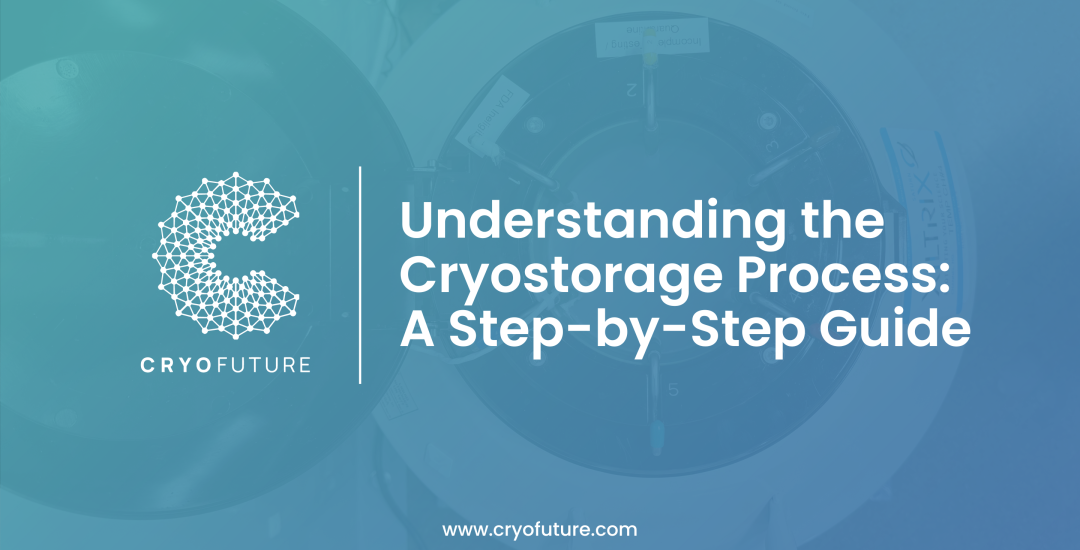BLOG
Understanding the Cryostorage Process: A Step-by-Step Guide
Embarking on the journey of cryostorage can be a significant step for individuals and couples looking to preserve their fertility. This comprehensive guide will walk you through each stage of the cryostorage process, providing a clear understanding of what to expect and how to prepare.
Step 1: Initial Consultation
The journey begins with an initial consultation with a fertility specialist. During this meeting, you’ll discuss your medical history, fertility goals, and any potential risks. The specialist will explain the cryostorage process in detail and answer any questions you may have. This is also the time to discuss costs, insurance coverage, and any necessary preliminary tests.
Key Points:
- Discuss fertility goals and medical history
- Understand the cryostorage process and associated costs
- Preliminary tests and evaluations
Step 2: Ovarian Stimulation (For Egg and Embryo Storage)
For individuals undergoing egg or embryo cryopreservation, the next step involves ovarian stimulation. This process typically lasts about 10-14 days and involves daily hormone injections to stimulate the ovaries to produce multiple eggs. Regular monitoring through blood tests and ultrasounds ensures the eggs are maturing properly.
Key Points:
- Daily hormone injections
- Regular blood tests and ultrasounds
- Monitoring egg development
Step 3: Egg Retrieval
Once the eggs have matured, they are collected through a minor surgical procedure called egg retrieval. This is usually performed under sedation in an outpatient setting. A needle is used to extract the eggs from the ovaries, guided by ultrasound imaging. The procedure is relatively quick, taking about 20-30 minutes.
Key Points:
- Minor surgical procedure
- Performed under sedation
- Guided by ultrasound imaging
Step 4: Sperm Collection (For Sperm and Embryo Storage)
For sperm cryopreservation, the process involves collecting a semen sample, usually through masturbation. The sample is then analyzed in the laboratory to assess sperm count, motility, and morphology before being prepared for freezing.
Key Points:
- Semen sample collection
- Laboratory analysis of sperm quality
- Preparation for freezing
Step 5: Fertilization (For Embryo Storage)
If you are opting for embryo storage, the retrieved eggs are then fertilized with sperm in the laboratory to create embryos. This process can be done using traditional in vitro fertilization (IVF) or intracytoplasmic sperm injection (ICSI), where a single sperm is injected directly into the egg.
Key Points:
- Fertilization through IVF or ICSI
- Creation of embryos for storage
Step 6: Freezing
The next step is the freezing process, also known as vitrification. This method rapidly cools the eggs, sperm, or embryos to prevent the formation of ice crystals, which can damage the cells. The vitrified specimens are then stored in liquid nitrogen at temperatures of -196°C, ensuring their long-term viability.
Key Points:
- Rapid freezing (vitrification)
- Prevents ice crystal formation
- Stored in liquid nitrogen
Step 7: Long-Term Storage
Once frozen, the specimens are placed in secure cryostorage tanks designed to maintain the necessary low temperatures. Facilities like CryoFuture employ advanced monitoring systems to ensure the integrity of the storage environment. Regular checks and maintenance of the storage tanks are performed to guarantee optimal conditions.
Key Points:
- Secure cryostorage tanks
- Advanced monitoring systems
- Regular maintenance and checks
Step 8: Future Use
When you are ready to use your stored eggs, sperm, or embryos, they are carefully thawed and prepared for use in fertility treatments. The thawing process is crucial, as it must be done gradually to preserve the viability of the specimens. Once thawed, embryos can be transferred to the uterus, while eggs can be fertilized to create embryos for transfer.
Key Points:
- Careful thawing process
- Preparation for fertility treatments
- Embryo transfer or egg fertilization
Frequently Asked Questions
How long can specimens be stored?
Specimens can be stored indefinitely under optimal conditions. There are reports of successful pregnancies from embryos and sperm stored for over a decade.
Is the process safe?
Cryostorage is safe, with rigorous protocols in place to ensure the security and viability of the specimens. Facilities like CryoFuture utilize state-of-the-art technology and stringent safety measures.
Choosing the Right Embryo Storage Facility
Selecting a reliable and secure cryostorage facility is crucial. Look for facilities that offer advanced monitoring systems, state-of-the-art security measures, and experienced professionals in embryology. CryoFuture is known for its cutting-edge technology and impeccable safety protocols, making it a trusted choice for many.
For more information and to begin your cryostorage journey, visit CryoFuture.

